We are listing here the Pokémon that we can’t confidently put in the MissingNo. list, but that might belong in the additional circa 110 scrapped designs that have been referenced several times by the creators. We will be positively surprised if some of them made it to the 190 semi-finals! Who are you rooting for?
| ⇐ | INTRO | P1 | P2 | P3 | P4 | P5 | ⇒ |
| MISSINGNO. OVERVIEW | LOST POKEMON OVERVIEW | ||||||
We strongly suggest reading the whole research starting from the intro, as it will equip you with the correct context to understand the identifications.
Some Capumon and placeholder monsters featured in the earlier documents don’t appear in the final list. Note: contrary to the common belief, Papyoo, Kabiin, and Buhii don’t belong in Capsule Monsters; the sheets they appear on are already titled “Pokémon” and Game Freak’s final logo is on it. We have some similar 1991 GF sheets from Jerry Boy (Smart Ball) and they have a different layout with a different GF script. Additionally, the first known dated GF logo is the unused one in Pulseman (1994).
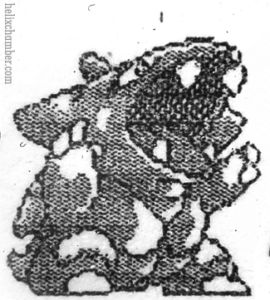 |
“No. 1” – It appeared in the 1990 Capsule Monster sprite sheet. Probably proto-Gyaoon, as they share a similar design and the trademark gaping mouth. It was listed as No. 1 on the Capsule Monsters sprite sheet – Rhydon’s final ID number is 0x01. Design-wise, its belly pattern looks like the one of the Rhino Capumon commonly associated with Rhydon. 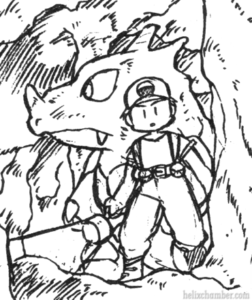 There is a definite Godzilla-like kaiju inspiration here. Is it among the MissingNo., or was it scrapped before? Why and when was Rhydon’s placement swapped with No.1? You can listen to its speculative cry here. There is a definite Godzilla-like kaiju inspiration here. Is it among the MissingNo., or was it scrapped before? Why and when was Rhydon’s placement swapped with No.1? You can listen to its speculative cry here. |
 |
Godzillante ゴジランテ – It appeared in the 1990 Capsule Monsters pitch as a placeholder monster in a mockup battle screen, battling against Gorillaimo. As its name implies, the battle might have been based off the Godzilla vs. King Kong battle, a famous Kaiju match. It is shown breathing fire. Its number is 23 as it appears on one of the storyboard’s frames, probably a randomly chosen number. |
 |
Gorillaimo ゴリライモ – It appeared in the 1990 Capsule Monster pitch as a placeholder monster in the battle screen mockup, battling against Godzillante. Its hat is the only feature separating it from a regular gorilla. It is primarily a reference to King Kong. |
 |
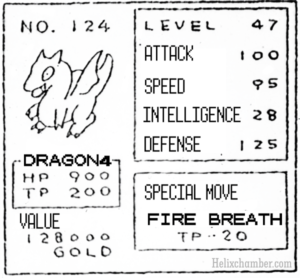 Dragon4 ドラゴン4 – It appeared in the 1990 Capsule Monster pitch as a placeholder monster in the stats menu screen mockup, Many details are known from its mockup, including its Special Move “Fire Breath“. Notably, its name resembles those of prototype Pokémon designs without finalized names, such as “Manbo1” in the Spaceworld 97 prototype. It may have implied that it was an evolution; however, it is unlikely that it actually had any other evolutions designed, as it was probably only drawn as an example. Dragon4 ドラゴン4 – It appeared in the 1990 Capsule Monster pitch as a placeholder monster in the stats menu screen mockup, Many details are known from its mockup, including its Special Move “Fire Breath“. Notably, its name resembles those of prototype Pokémon designs without finalized names, such as “Manbo1” in the Spaceworld 97 prototype. It may have implied that it was an evolution; however, it is unlikely that it actually had any other evolutions designed, as it was probably only drawn as an example. |
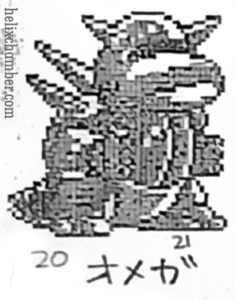 |
 “Omega” オメガ- First revealed in May 2018 as a tantalizing obscured sprite in the Tajiri manga poll, among the Period 1 monsters where it was crossed off with an X. Omega used to occupy slot 21 in the ID list, the very slot infamously taken by Mew in the final Pokémon RG release. It’s still unclear whether Omega stayed until the 190 cut or was scrapped right after the 1993 poll. “Omega” オメガ- First revealed in May 2018 as a tantalizing obscured sprite in the Tajiri manga poll, among the Period 1 monsters where it was crossed off with an X. Omega used to occupy slot 21 in the ID list, the very slot infamously taken by Mew in the final Pokémon RG release. It’s still unclear whether Omega stayed until the 190 cut or was scrapped right after the 1993 poll. |
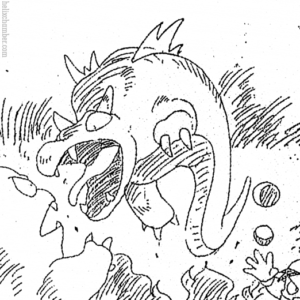 |
“Wyvern” monster – it appeared on the cover of Capsule Monsters battling against “Capumon Gengar“. Previously, it has been said to be somewhat of an ancestor to the Nido-family, as that cover inspired the iconic Gengar vs Nidorino match in the opening credits for the first Pokémon games. Despite this, Nidorino was added much later in development, and Nidoking and Nidoran’s appearances were nearly finalized in Capumon. It looks overall closer to Kangaskhan or Gyaoon in appearance. |
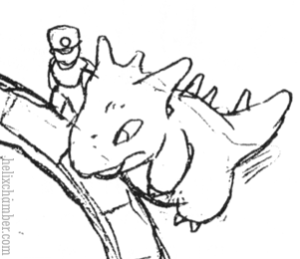 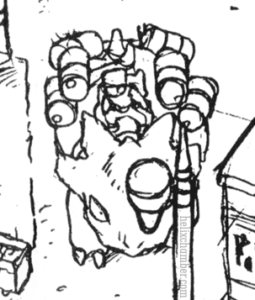 |
“Rhino” monsters – Capsule Monsters is populated by several rhino-looking monsters. Some of them might be proto versions of Rhydon, Rhyhorn and Gyarth. |
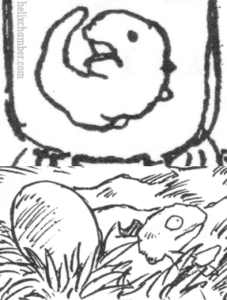 |
Fetus and Eggs – Fetal Pokémon and hatching eggs are visible in the Capumon pitch concept artwork. At this point, they might not have been considered as a separate species from their adult form, like most baby forms in the final games. |
 |
Firefly ファイアーフライー- Mentioned in the Capsule Monsters pitch. Fireflies (Hotaru) are another culturally relevant bug in Japan. |
 |
Green Dragon グリーンドラゴン- Mentioned in the Capsule Monsters pitch, maybe Dragon4. Color dragons are popular in JRPGs, such as Final Fantasy. |
 |
Power King パワーキング- Mentioned in the Capsule Monsters pitch, said to be as strong as soldiers. Probably a class like “Mirage monsters” and not a monster. |
 |
7 Missing Base cries with default parameters – These cries could hint at missing P1 Pokémon (excluding the already solved Voltorb, Gengar, proto-Ivysaur, proto-Clefairy and Gyaasu.) There are three missing base cries with default parameters: 0x20 (32) 0x21 (33) 0x23 (35) and four base cries assigned to Pokémon beyond ID 37: 0x1D (29) 0x22 (34) 0x24 (36) 0x25 (37) |
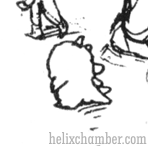 Pippi (Capumon Clefairy) – You can listen to its speculative cry here. The original Sugimori design from 1990; it could also might be the little white monster in this Capumon illustration. The poll sprite was traced on this one, and the final one was scaled down. Pippi (Capumon Clefairy) – You can listen to its speculative cry here. The original Sugimori design from 1990; it could also might be the little white monster in this Capumon illustration. The poll sprite was traced on this one, and the final one was scaled down. |
|
| Omuomu オムオム (Capumon Spearow) – Elements from this may have inspired Pidgey and even Fearow and Farfetch’d. The poll sprite already features the new design, and its final sprite was scaled down. |
The biographical manga about Satoshi Tajiri provided some insight into Game Freak’s cutting room floor during Period 2. Few “lost” designs were revealed, as most of the unused Pokémon are expected to be among the MissingNo. All the proto-Pokémon marked with a triangle in the Tajiri Manga poll might have received a makeover – their revised designs could be revealed if the final 190 Pokémon index is ever shown to the public.
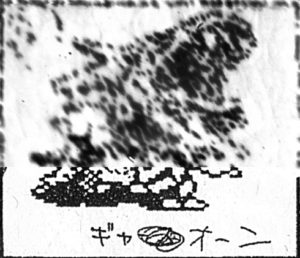 |
Gyaoon/Gyaasu ギャオーン / ギャース – Gyaoon is interesting. Its name is the onomatopoeia for Godzilla’s roar, and it has elements that later would be incorporated into strong, kaiju-like Pokemon such as Tyranitar, Charizard, and even Feraligatr. In the poll, they scratched out the ース” (a)su ” in its name, which implies that its name was Gyaasu “Gyarth” at some point. Although it sports a fairly different design, it might be identified with no.1 on the Capumon sprite sheet mainly because of its open mouth and pose. It may even share some pixels in the head/mouth region with its former sprite. |
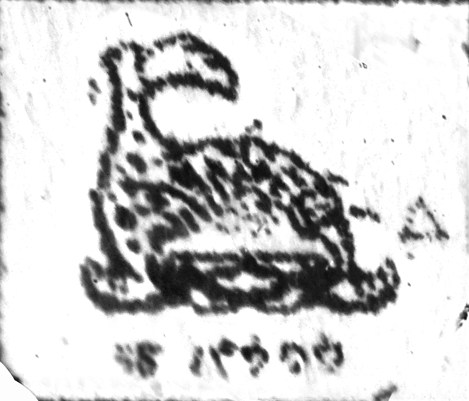 |
Pauwau パウワウ (proto-Seel) – Seel went through quite a makeover in the final game. It appears to be more of a realistic seal, especially a leopard seal, with several spots all over the top of its back. Then it reaches the head and just goes off the rails: very similar to Slakoth, with Chia Pet or Smoochum hair and some serious wall-eye going on. It possibly had a dark Shellder-like face with tusks and a big, round or human-like nose. Was marked as improvable (and it certainly did improve). |
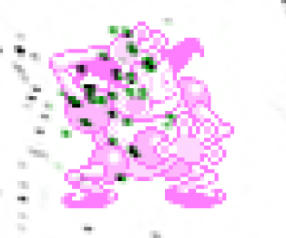 |
Baririina バリリーナ – This name might refer to Mr. Mime, but the sprite doesn’t match the dots completely. The name would imply a ballerina… so maybe Mr. Mime (バリヤード/Barrierd) had a different career choice at this point in development. Interestingly, Baririina is also the exact same name as its baby evolution in the Gold and Silver prototypes. It looks like Mr. Mime may have been somewhat different, but it would be difficult, if not impossible, to define its appearance any further. |
 |
Buu ブー– Mysterious Pokémon name variously interpreted as Magmar (Buubaa) or Electabuzz (Eleboo). Since the Tajiri manga sheet gave us no definitive identification, it’s still possible that this Pokémon is among the Lost ones. |
 |
Kokaana コカーナ (Proto-Weedle) – Quite similar to its final design. It looks like it’s wearing a tiny bowler hat where its needle should be, and it has no tail. |
 |
Kasanagi カサナギ – Replaced by Kakuna, possibly inspired Kricketot in the future. |
 |
Unnamed Kasanagi’s evolution – Replaced by Beedrill, and may have inspired Ledyba and Heracross. |
 |
Nyosuka ニョースカ – Replaced by Poliwrath, it sports a crown that could have later inspired Politoed’s evolution method. The crew stated they replaced it because they wanted something more tough looking for a third stage. |
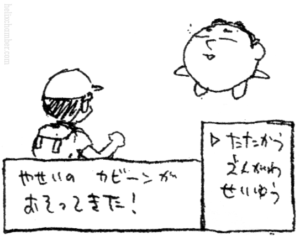 |
Kabiin カビーン – it appeared as a placeholder monster on a Game Freak storyboard illustrating the animation for catching a monster. The following 3 monsters are wrongly associated with Capumon, as the storyboards they appear in are development documents from much later. Kabiin was probably never meant to be a real Pokémon, but just drawn as a visual joke inspired by Koji Nishino. It also may have served as an unexpected inspiration for Jigglypuff and Snorlax as a result. Might belong either in P3 or pre-P4 since Kabiin might prove that Snorlax wasn’t present yet (or that GF wouldn’t let a joke go). Kabiin’s joke might also be interpreted as a “Purin” with Nishino’s face, implying Jigglypuff already existed, thus dating the sheets in between P3 and P4. The name reportedly comes from an inside joke about Nishino, who was said to be so hungry he could eat even mold (kabi カビ, 黴), the same origin of Snorlax’ final name “Kabigon”. |
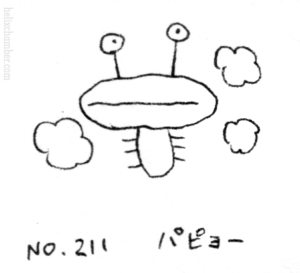 |
Papyoo パピョー – Placeholder bug-like Pokémon that appeared in a Game Freak storyboard illustrating the trading of a monster along with Buhii. Labeled no. 211, possibly a randomly chosen number that might prove that the crew still meant to add more than 200 monsters at this stage. The smoke puffs that surround it come from the animation of the Pokéball popping open. We can’t imagine if an inside joke inspired it, or if it was just a doodle. |
 |
Buhii ブヒー – Placeholder cat-like Pokémon that appeared in a Game Freak storyboard illustrating the trading of a monster along with Papyoo. Labelled No. 124 which is Metapod’s final internal ID (and coincidentally also Dragon4’s number), this might either mean the ID list hadn’t been coded til 124 yet (thus dating it in P3) or that, more likely, the designer wasn’t paying much attention to its numbering. ブヒ Buhi is the onomatopoeia for pigs in Japanese, again, probably an inside joke we can’t get. |
 |
Gorochu ゴロチュウ – Raichu’s evolution, likely scrapped in the design stage for balance reasons, as Nishida described it: “I was told to make its final form look strong. That’s right, there was an evolved form after Raichu at the time. Its name was Gorochu. It had fangs and horns and looked like a god of thunder.” |
 |
Other lost 3rd stages – Nishida and Nishino talked about a bunch of scrapped 3 stages probably referring to this period. We can briefly speculate about who went missing before the 190 cut thanks to the lost Pokémon in the 1997 Gold Demo. Mikon (Vulpix’ unused pre-evo) was most likely a candidate, as Vulpix’ Blue Pokédex entry even hints at its lost pre-evolution. Kingdra might have been considered during this period. There’s a slight chance (but sadly no definitive proof) that some of these scrapped evolutions were re-coded elsewhere in the ID list, probably in Period 5. |
By P4, possibly every P1 Pokémon was considered in need of an evolutionary relative.
SOURCES, NOTES AND MEDIA
- The 2018 Yomiuri interview about Pikachu’s origins with Sugimori, Nishida and Nishino. Edited and translated both by Pokemon.com and by Sato on Siliconera.com. This is the famous interview where Gorochu was revealed; we recommend reading both translations as the editing is quite different and each one features some exclusive insights.
- GameInformer Pokémon dossier and video interviews with Ohmori and Masuda.
- Iwata Asks, with Morimoto and Ishihara.
- Nintendo.co.jp interview with the creators (JP) and Glitterberri’s translation.
- The 2004 Game Center CX interview with Satoshi Tajiri is available in the Game Center CX DVD Box 3 on Amazon , you can read an overview on the episode on Crunck games GCCX episode guide S1 Pokémon special .
- 1999, TIME interview with Satoshi Tajiri.
- 1997, Game Staff List Association Japan interview with the creators, and Glitterberri’s translation.
BOOKS AND OTHER MEDIA
- ゲームフリーク ―遊びの世界標準を塗り替えるクリエイティブ集団, by Akihito Tomisawa
- Shogakukan, Manga Special about the life of Tajiri Satoshi.
- Game design by Satoshi Tajiri
- Game On 2.0 Exhibition
OTHER RESEARCHES
- Zod’s thread on Smogon “There were 190 Pokémon!”
- Crystal_ ‘s thorough analysis of the Missingno.
- Crystal_ ‘s criticism (1) (2)
- The Cutting Room floor pages about Pokémon Red and Blue (1) (2)
- Glitchcity page about MissingNo.
- Glitterberri’s dossiers about Capsule Monsters and the genesis of the Pokémon games.
- TRANS video about Pokémon beginnings (FR, SUB ENG)
- http://arukuukura.blog.fc2.com/ (JP)
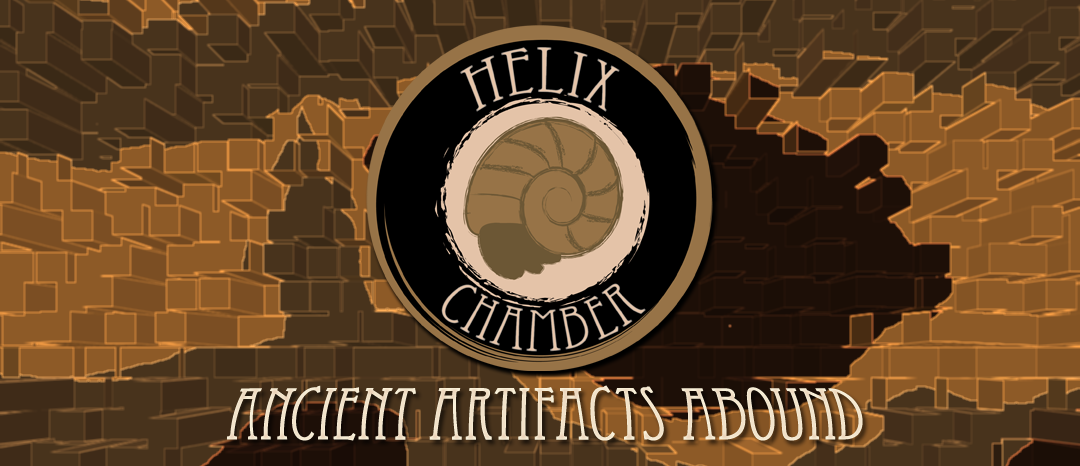
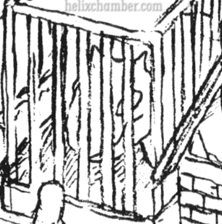

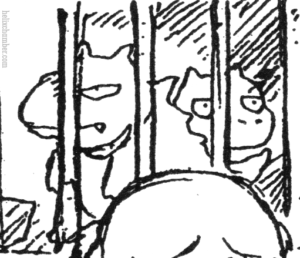
I think the Wyvern monster looks like an ancestor to Feraligatr. I know we’re talking about Kanto, but some designs that were scrapped were used in generation 2, so this could be an ancestor to Feraligatr.
Looks more like a more ferocious Dunsparce to me. Sharp “wings,” the weirdly broad face, the fat body ending in a point…
I noticed that the pokemon thats a gorilla wearing a hat. The name is translated as Gorillaimo from ゴリライモ which can also be translated as Goriraimo where the “raim” part sounds like rhyme. The hat also makes him look like a rapper.
Possibly the original Grooky concept?
So looking at some of the old Pokemon concepts, like the weedle design and the cactus design, they both look like Mario enemies. Plus the fact that the main character is a boy that wears a red hat, red jacket and blue jeans… Could Pokemon have been part of Mario at some point?
And also the CheepCheep Missingno.! Well not really part of the franchise, but it’s really possible the designers took inspiration from their favourite mario mons 😀
I was looking through this, and before I came to this article, I came to the realization the capumon behind the proto-trainer in the “cave” scene concept art had to be some version of gyaoon, seeing the prototype version of rhydon at the same time was different, and the chest features and the “knee bands” sold it for me, since only gyaoon had it. Although, the fact you referred to it as “Gyarth” threw me off, since other places refer to pre-Gyaoon as Gyarth, including one artist who is redesigning the entire pokedex, and some more, like glitch pokemon, and as was hinted at, Gyaoon and pre-Gyaoon.
And now looking back at it, I now want to delete my comment…
WORTH NOTING: Buhii is probably not an inside joke!
Given that it’s a cat portrayed without legs (like it’s in a bag), and that it’s named after the onomatopoeia for pig squeals, it’s likely based on two related Idioms.
1. “Wouldn’t buy a pig in a poke” Poke, meaning a concealed Bag.
2. “Letting the cat out of the bag”.
The first idiom is used to express a warning of being scammed. In the 19th century, some scam artist farmers would swap a piglet with a cat when bringing it to market in a pouch. When the buyer, expecting a piglet, would discover the deception, he was “letting the cat out of the bag”; Hence, the second idiom referring to revealing a secret.